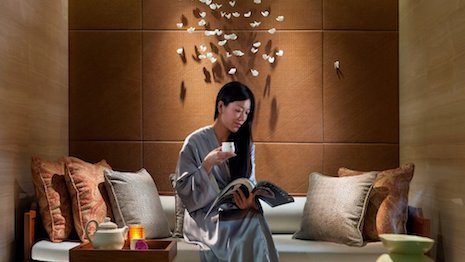- About
- Subscribe Now
- New York,
January 31, 2019

 Chinese affluents are spending more on fashion and travel. Image credit: Mandarin Oriental
Chinese affluents are spending more on fashion and travel. Image credit: Mandarin Oriental
Despite concerns over the health of China’s luxury market, the majority of Chinese affluents remain optimistic about their spending and expect their disposable incomes to increase in 2019.
Notably Chinese consumers are interested in making more big-budget purchases of jewelry and accessories, according to Agility Research’s 2019 Affluent Insights study. Regarding travel spend, affluent Chinese are now looking for more adventurous activities rather than purchasing luxury goods.
“The Chinese luxury consumer is optimistic about 2019 and is looking to spend on luxury goods as well as travel,” said Amrita Banta, managing director at Agility Research & Strategy, Singapore. “In fact, they are looking to increase their spending on travel experiences as well as more expensive brands in categories like fashion.”
Agility surveyed more than 1,000 affluent Chinese consumers with annual household earnings of at least $59,000, including 300 millionaires.
Luxury shift
Seventy percent of affluent Chinese consumers expect to spend more on luxury goods and services in 2019 than they did the previous year.
Additionally, 72 percent of respondents believe their disposable incomes will rise in the next 12 months. Fifty percent expect to spend more on luxury items, with 47 percent in particular looking to buy from more expensive brands.
Chinese affluents plan to spend more money on jewelry in 2019. Image credit: Secoo
Sixty-four percent expect to buy fashion items from costlier brands than they did in 2018. Jewelry and accessories were mentioned as the most desired items, followed by watches and cars.
Meanwhile, travel now accounts for 31 percent of affluent Chinese consumers’ spend, up from 24 percent in 2018. This figure includes tickets, accommodations and experiences.
A majority of consumers, 59 percent, are increasing the number of overseas trips they take. On average, a Chinese high-net-worth individual took 2.9 leisure trips in 2018.
Fifty-eight percent of Chinese travelers are also planning on increasing their spend on activities, including camping, skiing, surfing, mountain climbing and more.
“One thing that was unexpected is the adventurous travel that Chinese luxury consumers are now interested in and so many of them have been involved in,” Ms. Banta said.
Aside from staying active while traveling, Chinese affluents are also becoming more passionate about exercise and other ways of staying healthy. Forty percent consider going to the gym a top hobby and 24 percent participate in yoga.
Travel now accounts for 31 percent of affluent Chinese consumers’ spend. Image credit: Priority Pass
In a continued shift from previous years, shopping abroad is less of a priority for Chinese consumers. Respondents are less drawn to retail experiences overseas, but they will take advantage of better prices.
A prior report from Agility showed that shopping and sightseeing remain popular leisure travel activities for high-net-worth individuals from China. Millionaires in China, Malaysia and Thailand show the most interest in purchasing luxury goods while they travel (see story).
Mobile growth
Mobile applications and mobile search are also gaining popularity among Chinese consumers. According to Agility, 63 percent of respondents turned to social media apps, and 59 percent turned to travel or guide apps during their trips.
While traveling overseas, more than 90 percent of Chinese tourists will use mobile payment platforms if the option is available, according to a report from Nielsen and Alipay. While Chinese consumers are more digitally savvy than other travelers, mobile pay also eases the difficulties that can come with language barriers and other issues from traveling abroad.
This is extremely important for luxury retailers and brands, as these travelers are looking to go shopping while abroad (see story).
When it comes to luxury on Chinese social media application Weibo, younger consumers are the prevalent force driving usage.
Seventy percent of luxury consumers on Weibo are younger consumers born in or after the 1990s, which is much greater than the percent of young consumers in the total population, according to a whitepaper from Secoo. Weddings, children, apparel, food, housing, transportation, literature, fun, design and pets are the leading topics of discussion in the luxury space on the social network (see story).
“I think the Chinese luxury consumer is more discerning now, and their share of wallet is divided between luxury experiences and luxury goods,” Agility's Ms. Banta said. “Fine dining, wine tasting, exercise and outdoor activity are all taking up their time and money, so luxury brands will have to combine product with experience and service to delight these luxury consumers.”
Share your thoughts. Click here